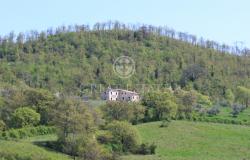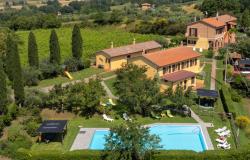 Italian historians believe they have found the missing tomb of a Medici duchess who died mysteriously over four centuries ago.
Italian historians believe they have found the missing tomb of a Medici duchess who died mysteriously over four centuries ago.
Experts think the tomb, which came to light during building work at Florence's San Lorenzo Basilica, belongs to Bianca Cappello, the mistress and later wife of Francesco I de Medici, the second Grand Duke of Tuscany.
If confirmed, the find may help prove the theory that Francesco and Bianca were victims of one of the many murder plots that marked the Florentine dynasty's 300-year rule.
The couple died within a day of each other in October 1587.
They were said to have died of malaria, although there have always been suspicions they were poisoned by Francesco's brother Ferdinando I (1549-1609) so he could take the throne.
Recent toxicology tests carried out by the University of Florence on the remains of Francesco, who is buried in the Medici family chapel in San Lorenzo Basilica, uncovered traces of arsenic.
If researchers find arsenic in Bianca's remains too, there will be little doubt that the couple was assassinated.
First though, they must run checks to make sure the tomb belongs to her.
Francesco ruled - often despotically - from 1574 until his death at the age of 46.
He caused scandal in 16th-century Florence by openly keeping Bianca as his mistress while married to Johanna of Austria, the youngest daughter of Holy Roman Emperor Ferdinand I.
Francesco himself is suspected of involvement in the death of Bianca's first husband in 1572.
Bianca became the Grand Duchess of Tuscany when Francesco married her shortly after Johanna died in 1578.
She was not buried with Francesco in the Medici family chapel. Her body was whisked away - possibly to hide evidence of foul play, although it may have been because of the controversial nature of the couple's relationship.
The location of her tomb was a mystery, until now.
Professor Donatella Lippi, the University of Florence expert who is leading forensic research on the Medici family's remains, said the human remains in the tomb are well conserved.
MORE TESTS NEEDED.
The body was dressed in a braided gown made with fine material, she said.
"The hypothesis that Bianca Cappello's body was in the San Lorenzo complex, but not in the Medici chapel, had been around for some time because of evidence from documents," said Lippi.
"Now we have to carry out careful tests on the new find to be absolutely certain that the tomb is hers".
Lippi's research on the tombs of the opulent family, who turned Florence into the European centre of art, started three years ago.
The unprecedented project hopes to solve the riddles surrounding a number of deaths among the Medici, who were as notorious for their court intrigues as their magnificence.
So far, the research has thrown up as many questions as it has answered.
Throughout the exhumations tombs have been found empty or the contents have been wrong.
Scientists were baffled in 2005 when they opened the tomb of a Medici heir who died when he was nearly five.
Inside they found the remains of an unidentified one-year-old.
The last of the Medici line, Giangastone, was found in his tomb without the sword which documents said should have been there. Meanwhile, Cosimo de' Medici was found with a broken sword on his chest.
An examination of Medici relics found that teeth and a lock of hair believed to have belonged to Lorenzo the Magnificent, Florence's legendary ruler and Renaissance art patron, were apparently not his after all.
According to researchers, the two teeth and hair actually belonged to a far less illustrious member of the family.
It seems there was another mix-up over a blood-stained piece of shirt traditionally said to have been worn by Lorenzo's brother Giuliano when he was murdered in a plot.
The two relics have been sitting in a Florence museum for as long as anyone can remember, drawing reverential visitors to come and gaze at them, imagining the colourful history of which they seemed to be a part.
"In actual fact the articles attributed to Lorenzo the Magnificent and his brother Giuliano belong to Lorenzo, Duke of Urbino, and Alessandro, Duke of Florence," Lippi said.
The real owner of the teeth ruled Florence briefly in the early 16th century and died 27 years after his famed namesake. The owner of the blood-stained cloth also ruled for a time and was assassinated in 1537.
The Medici family rose from humble merchant origins to rule Florence and Tuscany. They held power from 1434 to 1737, producing three popes and two queens of France and becoming important art patrons who exerted a vital influence over Renaissance Florence.
The tombs are graced by some of Michelangelo's greatest works.













